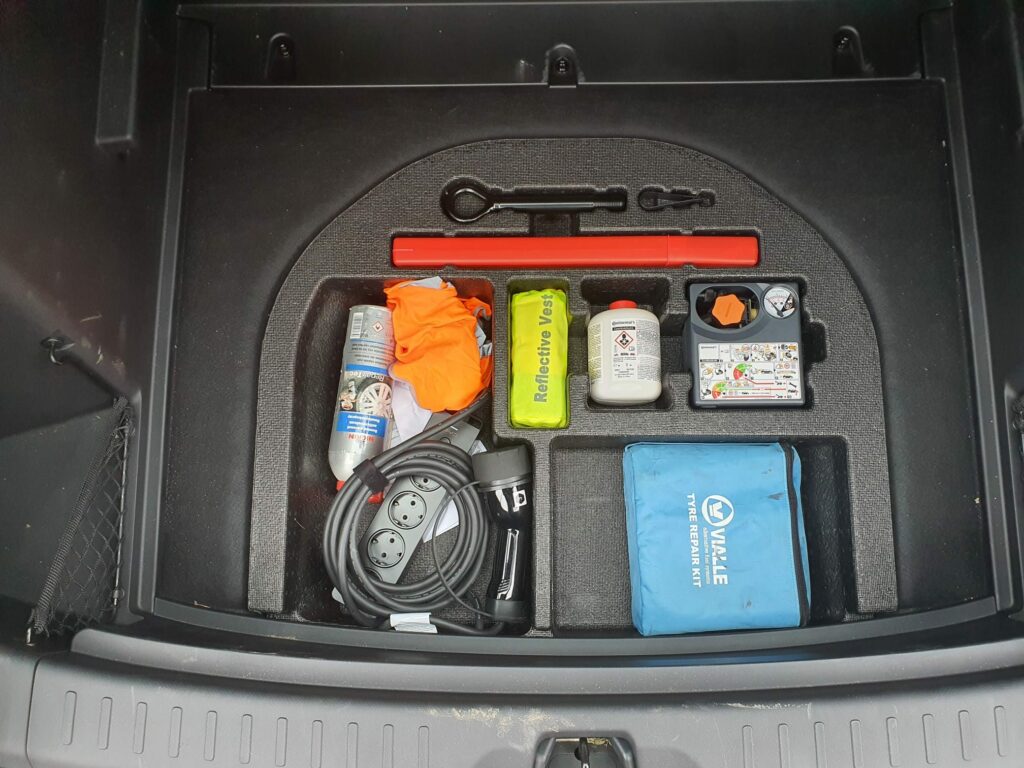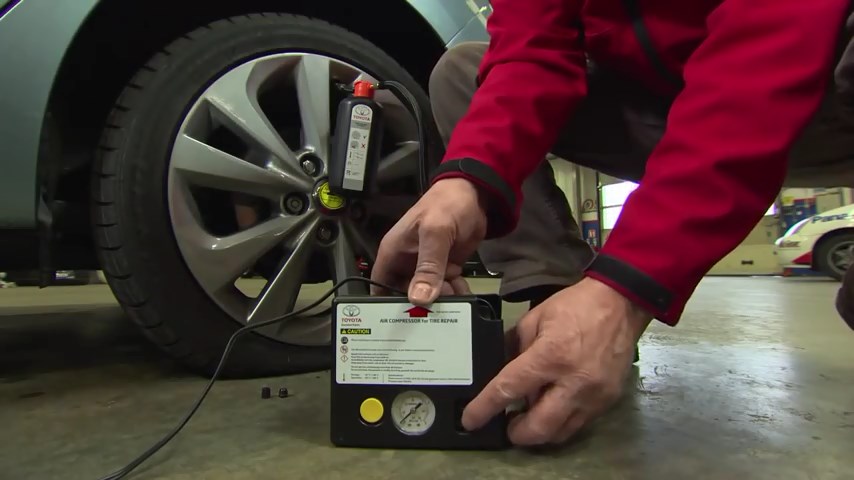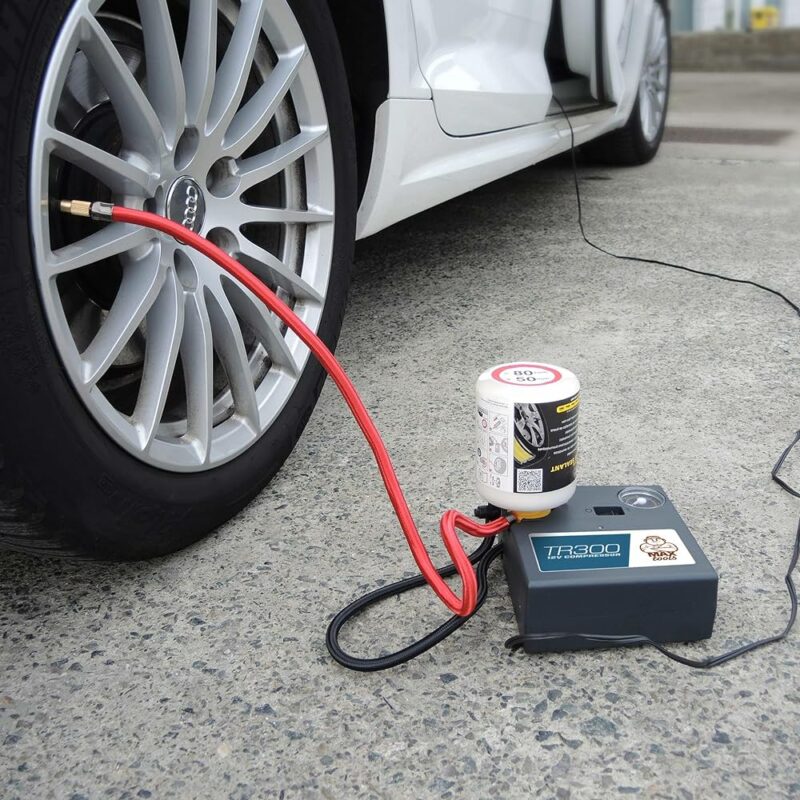You may have noticed that instead of a spare wheel, new cars are increasingly being provided with a tire repair kit. This is due to several reasons, and while these kits have their advantages, they may not be a perfect replacement for a spare wheel in every situation.

Reasons for Tire Mending Kits:
- Fuel Efficiency: Car manufacturers are under pressure to improve fuel efficiency and reduce emissions. Carrying a spare wheel adds extra weight, which affects fuel consumption. Eliminating the spare wheel in favor of a lighter tire mending kit helps improve the car’s overall fuel efficiency.
- Space and Design: Modern cars often have limited storage space, especially in compact and hybrid vehicles. Removing the spare wheel creates more cargo space, allowing manufacturers to design sleeker, space-efficient vehicles.
- Cost Efficiency: Providing a tire mending kit is way more cost-effective for car manufacturers compared to including a spare wheel, especially in budget-friendly models.
Usefulness of Tire Mending Kits:
Tire mending kits typically include a sealant and a compressor. When a tire gets punctured, the sealant is injected into the tire, sealing the hole and inflating the tire using the compressor. These kits are useful in specific scenarios:
- Minor Punctures: Tire mending kits are effective for repairing minor punctures caused by small nails or screws. The sealant can temporarily fix the leak, allowing the driver to reach a nearby service station for a proper tire repair or replacement.
- Convenience: Tire mending kits are convenient and easy to use. They require minimal effort and can be handy for drivers who are comfortable performing basic car maintenance tasks.
Limitations and Considerations:
- Irreparable Damage: Tire mending kits are ineffective for larger punctures, blowouts, or damage to the tire’s sidewall. In such cases, a spare wheel would be the only viable solution.
- Limited Range: Some sealants have restrictions on the distance a vehicle can travel after being applied. If the nearest service station is too far, the kit might not provide a reliable solution.
- Temporary Fix: The sealant provides a temporary fix. It is not a permanent solution, and the tire still needs to be inspected and repaired by a professional as soon as possible.
- Compatibility: Tire mending kits might not work with all types of tire damage or all tire sizes, limiting their effectiveness in certain situations.

In conclusion, while tire mending kits offer a convenient and temporary solution for minor punctures, they are not an ideal replacement for a spare wheel in every circumstance. Car owners should be aware of the limitations of these kits and consider their driving habits, local road conditions, and the availability of repair services when evaluating the suitability of a tire mending kit versus a spare wheel for their specific needs.
How to use a tire mending kit
In case you are unfamiliar with using a tire repair kit, here is the procedure to follow in the event of a punctured tire. A typical tire mending kit generally includes a sealant and a compressor. Once you pull over at a safe spot, you need one end of the sealant bottle to be connected to the tire’s nozzle and the other to the compressor (see the above pic). The compressor is then plugged into the power socket your your vehicle via the cable provided. When the inflation begins, the sealant is injected into the tire. Do note that depending on the kit provided with your car, the method can vary. Some kits allow sealant bottles to be directly connected to the compressor without needing you to attach them to the nozzle (see the pic below).

Allow the compressor to inflate the tire to the recommended pressure, which can usually be found on a sticker inside the driver’s side door jamb or in the owner’s manual. Most kits include a pressure gauge to monitor the inflation. After the tire is inflated to the correct pressure, the sealant will spread inside, sealing the puncture. Drive the car for a short distance (as recommended in the kit’s instructions) to allow the sealant to distribute inside the tire effectively. This helps in sealing the puncture securely.
Related: Why New Cars Don’t Include a Spare Tire?
Always familiarize yourself with the instructions provided in your car’s manual and the tire mending kit. Different kits might have specific steps and requirements. Follow the kit’s instructions to do the procedure correctly.

I don’t eat, sleep or dream of cars, I am just someone who loves to see, think & write about cars. I love Ferrari in Pink but they won’t make one for me. I use X to write my full name, but that doesn’t mean I’m inspired by Altis X, in fact, my dad hates it 😀 Btw I’m an occasional writer so don’t expect too much from me 🙂




